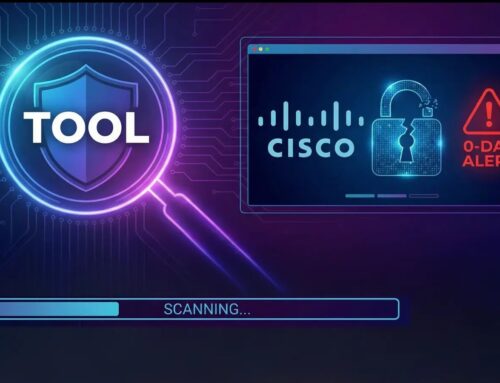
ToxicPanda Android Banking Malware Infected 4500+ Devices to Steal Banking Credentials
The Silent Swipe: ToxicPanda Android Malware Infiltrates 4500+ Devices
Mobile banking applications have become indispensable, offering unparalleled convenience for managing finances. However, this convenience comes with inherent risks, especially when sophisticated threats like ToxicPanda emerge. A recent and alarming campaign has seen the ToxicPanda Android banking trojan successfully compromise over 4500 mobile devices across Europe, marking one of the most significant mobile banking malware attacks observed in recent history. As cybersecurity professionals, understanding the tactics, targets, and potential fallout of such campaigns is paramount to safeguarding digital assets and user trust.
Understanding ToxicPanda: A Sophisticated Banking Trojan
ToxicPanda is not merely a common piece of malware; it’s a highly sophisticated Android banking trojan designed for maximum impact. Its primary objective is the surreptitious theft of sensitive financial credentials. The malware achieves this by specifically targeting legitimate banking and digital wallet applications, employing advanced techniques to bypass security measures and deceive users. The sheer scale of over 4500 infected devices underscores its effective distribution and stealth capabilities.
Modus Operandi: How ToxicPanda Steals Credentials
The core of ToxicPanda’s attack vector lies in its use of overlay techniques. When a user attempts to open a legitimate banking or digital wallet application, ToxicPanda overlays a fake, malicious login screen designed to mimic the authentic interface. This seamless deception tricks users into entering their sensitive information, including:
- Login Credentials: Usernames and passwords for banking and digital wallet accounts.
- PIN Codes: Personal Identification Numbers used for transactions and access.
- Pattern Locks: Graphical authentication patterns used to unlock devices or applications.
Once entered, this stolen data is then exfiltrated to the attackers’ command and control (C2) servers. This method is particularly effective because it leverages user trust in familiar application interfaces, making detection by the average user extremely difficult.
Targeted Landscape: European Devices at Risk
The analysis reveals that the ToxicPanda campaign has predominantly impacted mobile devices within Europe. This geographic focus suggests potential language-specific phishing campaigns or distribution vectors tailored to European banking institutions and user demographics. The concentration of attacks highlights the need for heightened vigilance and proactive security measures within this region’s mobile ecosystems.
Remediation Actions and Prevention Strategies
Mitigating the threat posed by ToxicPanda and similar banking trojans requires a multi-layered approach involving both individual user awareness and robust organizational security practices. Here are key remediation actions and preventative measures:
- Source Only from Official App Stores: Advise users to download applications exclusively from verified sources like the Google Play Store. Unofficial app stores or direct APK downloads are common vectors for malware distribution.
- Scrutinize App Permissions: Educate users to carefully review permissions requested by applications during installation. Banking apps do not typically require permissions like SMS access or extensive contact list access beyond what is strictly necessary.
- Enable Multi-Factor Authentication (MFA): Strongly encourage and, where possible, enforce the use of MFA for all banking and financial applications. Even if credentials are stolen, MFA can act as a critical second line of defense.
- Keep Software Updated: Ensure that the Android operating system and all installed applications are kept up-to-date. Software updates often include crucial security patches that address known vulnerabilities.
- Install Reputable Mobile Security Software: Promote the use of trusted mobile security solutions that offer real-time scanning for malware, phishing protection, and app sandboxing capabilities.
- Regularly Monitor Bank Statements: Advise users to routinely review their bank and credit card statements for any suspicious or unauthorized transactions. Early detection can prevent significant financial loss.
- Be Wary of Phishing Attempts: Educate users about the signs of phishing (e.g., suspicious links, unsolicited messages, urgent requests for credentials). Malware often propagates through phishing campaigns.
Relevant Tools for Detection and Mitigation
| Tool Name | Purpose | Link |
|---|---|---|
| Virustotal | Online service for analyzing suspicious files and URLs for malware. | https://www.virustotal.com/ |
| Google Play Protect | Built-in Android security feature for scanning apps for malicious behavior. | (Integrated into Android devices) |
| Malwarebytes Security | Mobile security application for real-time malware protection, phishing prevention. | https://www.malwarebytes.com/mobile |
| Kaspersky Mobile Antivirus | Comprehensive mobile security suite with anti-phishing and anti-theft features. | https://www.kaspersky.com/android-security |
The Broader Implications and Future Outlook
The ToxicPanda incident serves as a stark reminder of the escalating sophistication of mobile malware and the persistent threat it poses to financial institutions and individual users. The ability of such malware to remain undetected for extended periods and to target specific applications with high precision highlights a critical need for continuous innovation in mobile threat intelligence and defense mechanisms. As the global reliance on mobile banking grows, so too will the efforts of cybercriminals to exploit this dependency. Proactive security postures, constant user education, and collaborative threat intelligence sharing remain the most effective strategies against these evolving threats.





